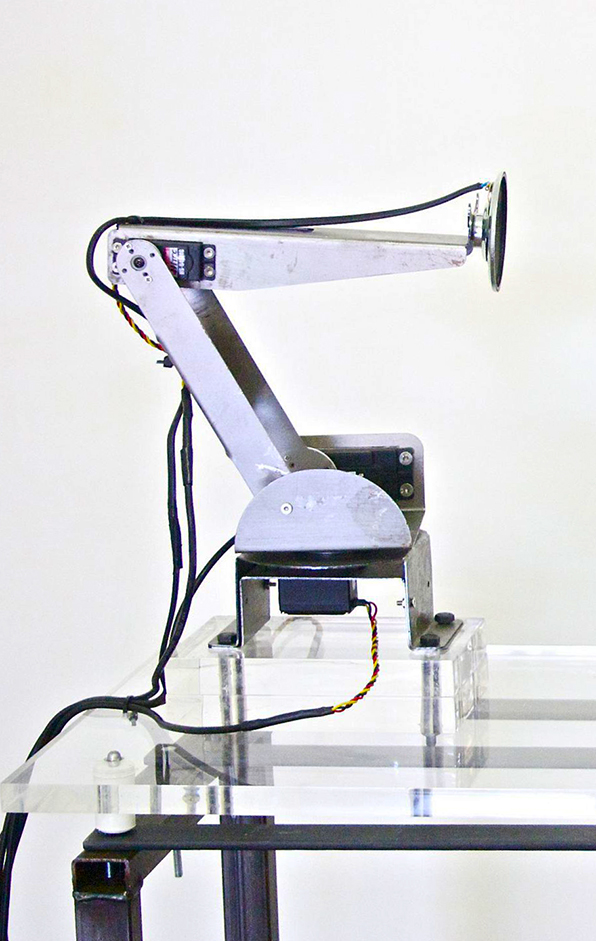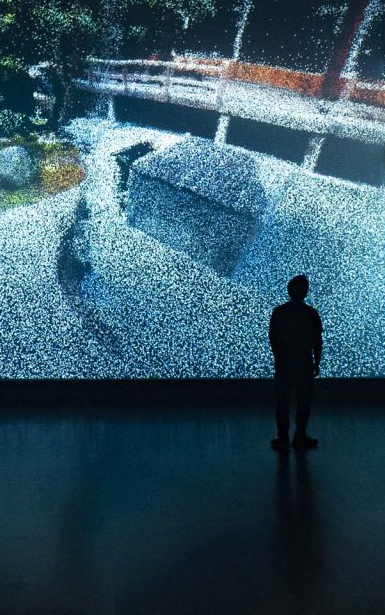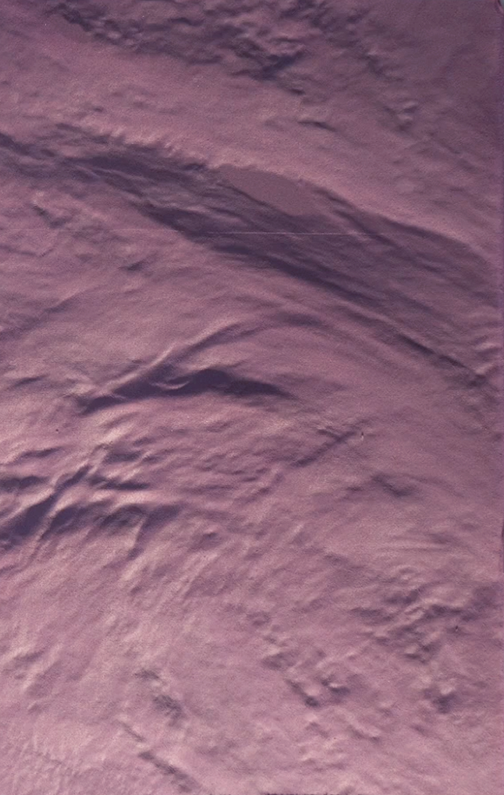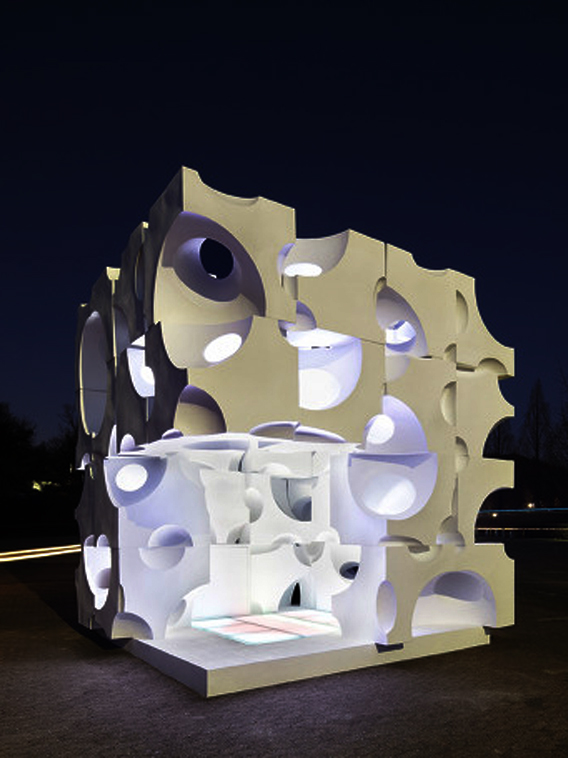A giant rail construction with an organically spiral-shaped spatial structure is put up in the exhibition space. Rolling on that rail are countless balls with built-in full-color LEDs and communication devices. From terminals set up inside the venue, visitors can send commands to the balls to control the timing and coloration of their blinking, and thereby draw three-dimensional afterimage in the air. Through the fusion of a minutely designed rail construction and communication control technology, an unprecedented form of spatial expression was realized in the form of a flexible “light structure“.
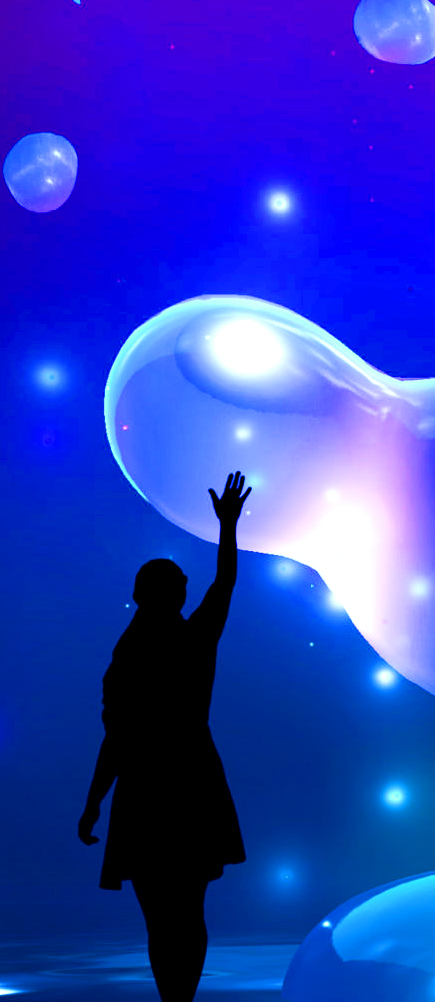
Michaela Pnacekova
A Symphony of Noise
Created by Michaela Pnacekova, Jamie Balliu
Herbert’s everyday sound sources are the inspiration for A Symphony of Noise VR. This interactive virtual reality experience is a journey through four sonic landscapes. The first centers on breathing, which immediately makes you focus on listening to the world differently. This is followed by an arctic environment full of scraping and crunching sounds, and finally a shop interior. Using the controllers or by blowing or singing, you can add sounds to the audio palette, which is visualized as waves and colors in three-dimensional space. In the fourth and final landscape, all the sounds are combined in an ultimate symphony.
